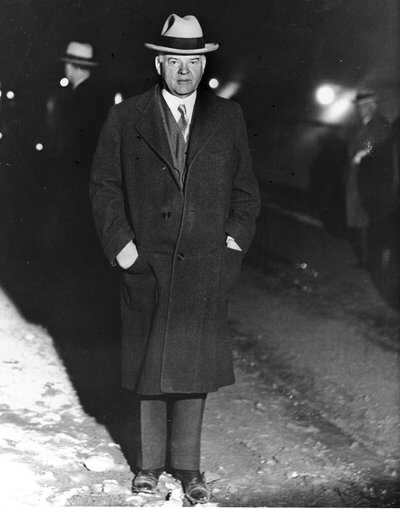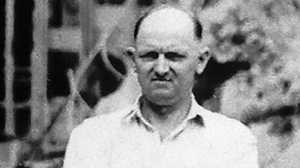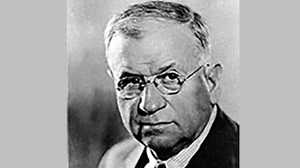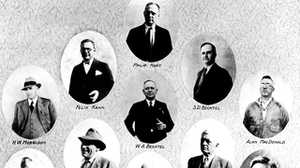President Herbert Hoover

During the time in the early 1920s when legislation was being crafted to authorize a dam on the Colorado River, Herbert Hoover served as Secretary of Commerce for President Warren Harding. Hoover was present at many of the early meetings that focused on how water would be allocated among the seven states (Arizona, California, Colorado, Nevada, New Mexico, Utah, and Wyoming) involved in the project. There was much disagreement over what constituted a fair distribution of water. After considering the concerns of all interested parties, Secretary Hoover drafted the Colorado River Compact. The Compact proposed dividing the Colorado basin into two parts, the upper and lower. Water from the upper basin would supply Colorado, New Mexico, Utah, and Wyoming, while the water from the lower basin would be used by Arizona, California, and Nevada. The terms of the compact seemed to quell the complaints of each of the states (with the exception of Arizona, whose failure to sign on was rendered moot by the approval of the other six states). Hoover was congratulated for his skill and efficiency in handling the matter. At this point in his career, Herbert Hoover was growing used to such praise.
A millionaire before age 40, Hoover was admired for his talent as a mining engineer and his administrative skills. During World War I, he distinguished himself as director of the American Relief Committee, a London organization charged with assisting stranded Americans escape war-ravaged Europe. Following that assignment Hoover had similar success as the chairman of the Commission for Relief in Belgium, where he coordinated the distribution of clothing, food, and medical supplies to civilians in France and Belgium. Having gained high marks for his war-time efforts, Hoover gained political prominence in the administrations of Presidents Harding and Coolidge. He served as Commerce Secretary for both men. In 1928, Hoover benefited from Calvin Coolidge's decision not to run for re-election. Hoover handily defeated Democrat Alfred E. Smith to win the presidency.
Hoover’s 1928 presidential victory turned out to be the high point of his political career. In his inaugural address, he confidently declared that, “...in no nation are the fruits of accomplishment more secure.” Seven months later the nation was rocked by the onset of the Great Depression.
As the Depression proved to be more than a temporary economic downturn, Hoover resisted pressure to take a more active role in rescuing businesses and private citizens from ruin. He feared fostering dependence on the federal government. As unrest caused by the Depression increased, Hoover’s interest in what was then being referred to as the Boulder Dam project increased. Eager to diminish the unemployment rolls, Hoover pushed for commencement of the project.
On September 17, 1930, Ray Lyman Wilbur, Hoover’s Secretary of the Interior, journeyed out to the Nevada desert to drive a silver railroad spike to mark the project’s official beginning. In doing so, Wilbur issued a statement that would be a source of derision and controversy for the next 17 years. Proclaimed Wilbur, “I have the honor and privilege of giving a name to this new structure. In Black Canyon, under the Boulder Canyon Project Act, it shall be called the Hoover Dam.” Those who were convinced that Hoover’s inaction had worsened the Depression scoffed at what they saw as political showboating and opportunism.
Dam construction did indeed create thousands of greatly-needed jobs, but it was not enough to rescue the political fortunes of Herbert Hoover. In the 1932 presidential election, he was soundly trounced by Franklin Delano Roosevelt. Eight days after his defeat, Hoover traveled to visit the construction site of the dam he had done so much to make possible. Whatever solace Hoover took in knowing that a remarkable monument of industrial genius would bear his name was short-lived, however. In 1933, newly appointed Secretary of the Interior Harold Ickes renamed the site Boulder Dam. Not until 1947 would Congress pass an official resolution declaring the site as Hoover Dam.







